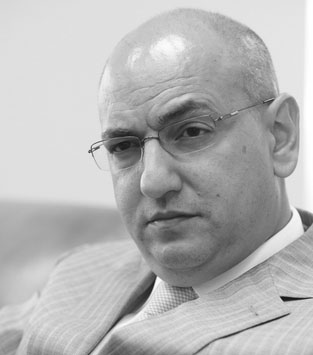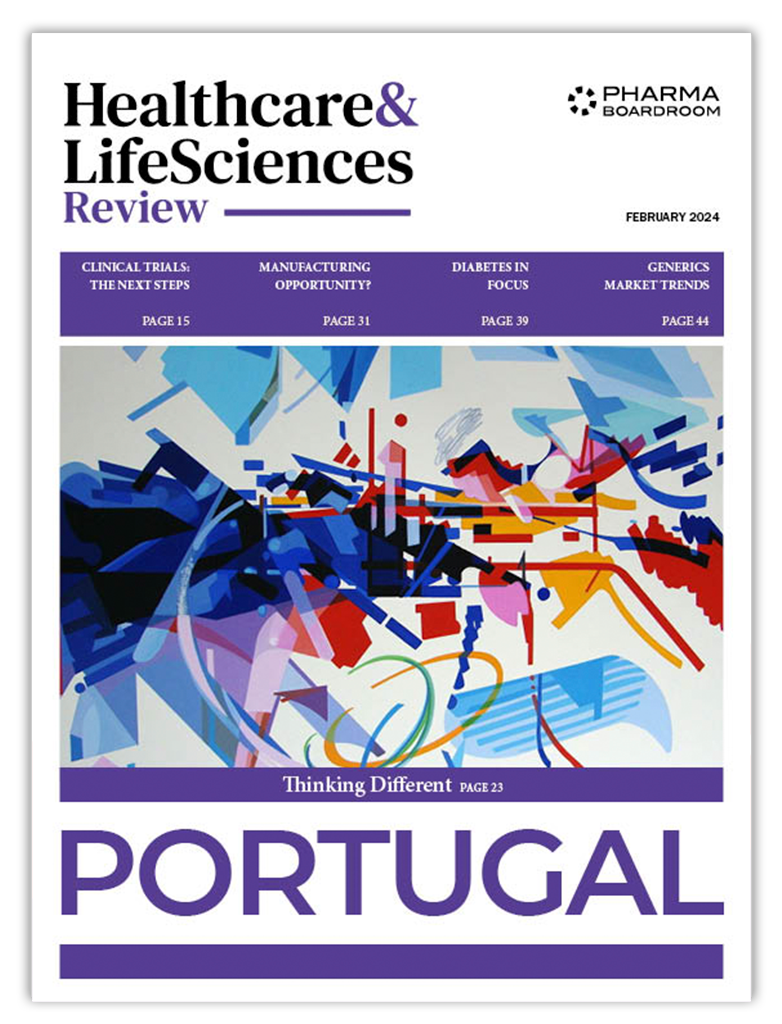If we first take a look at the healthcare system in Romania, it is clear that finding adequate funding has been a key challenge for many years. With 3.6% of GDP being spent on healthcare, Romania equals levels of countries such as Burundi and Bangladesh. In your view, what were the factors that have resulted in such a low degree of spending on healthcare in so many years?
Political choices have shown that other areas have been deemed in the past as a priority over healthcare. A key issue is that, regardless how much money has been invested in healthcare, the government did not perceive an improvement in the providing of medical services and the overall management of the system. While the expenses increased exponentially year after year, results didn´t seem apparent. The question appeared therefore why should more investments be made, if the already increasing budget does not produce the expected r
.
Another factor is the fact that Romania, as many other countries, has been facing a financial crisis during which certain corners needed to be cut. Unfortunately, this also affected the health sector.
Many of the CEOs Focus Reports has met in Romania, have claimed they were lobbying to give healthcare more importance in the country. However, do you feel that healthcare has become more of a priority over time, for the ministries and the government?
It has indeed become a priority, while it has also been made clear that it will become a key domain of discussion in the next few years, in connexion also with the agreements signed with the IMF and the World Bank.
Two months ago, when Mr. Cseke was still in office as Health Minister, it was already discussed that health reforms are needed while a rectification of the national health budget was imminent. What arguments can be brought to the table to increase this budget?
First of all, the increases in the budget need to assure the refunding of the medicines, especially those included in the national programs, which have become more and more expensive. On the other hand, due to the disappearance on the budget ceiling for the pharmacies and to inexistence of a prescription ceiling for the GPs, arrears have accumulated and increased over the years, making the budgetary adjustments necessary.
The lacking funding has been an issue for many years. Do you see the situation improving in the future?
President Traian Băsescu has made a clear statement saying that further funding will not be allocated to the Ministry of Health (MOH), before it can demonstrate an adequate control of its spending. The President considers that a great part of the expenses doesn´t benefit the Romanian patients, and there was no tight control of the MOH over its expenses.
At the end of July, an “integrity department” at the Ministry of Health was created in order to search for and diminish the fraud in the health system . Also, a project championed by the former Minister of Health, Mr Cseke Attila, is concerning the “Good governance through integrity and responsibility in the health system” and aimed at creating a national network, with experts in each Public Health Directorate, in order to identify and fight against the corruption in the system.
Romania is of course not the only country that is being challenged in terms of budget cuts and government spending. Increasingly, policymakers have been trying to have innovative drugs substituted by much cheaper generic versions. However, you mentioned earlier that generic drugs are often not as trusted by Romanians, or people are generally not that aware of them. Do you see increasing the uptake of generics as an opportunity to take away some of the budget pressure? Additionally, what measures can be taken to prepare the patient base?
President Traian Băsescu has announced that one of the new missions of the MOH will be to impose the use of generic medicines wherever it is possible.
With regards to preparing the population and shaping the attitudes towards generic medicines, the MOH will need to launch communication campaigns to make people better aware of the quality and advantages of using generics. A better cooperation with and training of the pharmacists and GPs regarding the good prescription practices is also needed.
As Romania’s healthcare system evolved over the years, 2006 was obviously a big year with the introduction of CNAS. What did this mean for healthcare in Romania?
CNAS came into being in 2006 as an autonomous institution, whose main objectives were and still are to ensure the coordinated and unified functioning of the social health insurance system, to manage the National Social Health Insurance Fund in order to finance primary medical care, hospitals, medicines, emergency transportation, and so on, to use the appropriate means in order to inform and protect the interests of the insurees and to provide as better a medical coverage as can be obtained in the limit of the allocated spending budget..
Another opportunity to take the pressure off the government budget is the introduction of private insurance. It is expected that more and more private insurers will be entering the market, but how will this be affecting the healthcare system in Romania?
Currently, the private market for health insurance in Romania stands at around EUR 10 million. Market analysts deem it possible that once a basic benefit package will be introduced in the public system, this private insurance market could grow to several hundred millions of Euros. At the moment, there are different approaches in what the role of the National Health Insurance House should be. The only request from the politicians so far, is that the basic benefit package will be presented at the end of the year. Depending on how this package will be presented, we can talk about the role of the private insurance providers.
Can you explain to our readers how the original “abonament” worked in Romania?
At the moment, private companies or individuals have the possibility to subscribe an “abonament” to private health institutions, the content of which varies significantly, but generally includes a limited number of visits to the GP, specialists and laboratories, as well as a number of visits from private ambulances to individuals’ homes, etc.
How will the increasing presence of private insurance providers affect the current role of the abonament in Romania?
In an ideal situation, the abonament will develop and change into private insurance.
In terms of organization, it has already been quite a topic of conversation to combine the leadership of the Ministry of Health and CNAS… in the meantime, a new Health Minister has already stepped in office. How do you see the distribution of roles between MOH and CNAS, and how do you see it working out practically?
The Ministry of Health will coordinate the activity of the CNAS , the practical aspects of this coordination are still to be discussed.. The role of the Ministry of Health is to define a clear strategy for the health system while CNAS remains in charge of purchasing and financing of services. As stipulated in the 2006 Law and reinforced by the recommendations of IMF and World Bank reports, the National Insurance House is an autonomous institution,.
You mention the World Bank, while we have also recently seen CNAS in talks with the IMF. How does the presence of these institutions affect healthcare in Romania, and the way CNAS can operate here?
The World Bank introduced two reports: a general review of the healthcare system, and another with a focus on the pharmaceutical sector. These reports include recommendations for both the MOH and CNAS. An agreement exists between the MOH and the World Bank wherein a number of key indicators have been specified. For CNAS, the main recommendations were to maintain its autonomous situation, to have a transparent administration of the budgets, and to participate in the elaboration and implementation of the basic benefit package.
Apart from external transparency, what opportunities do you see to increase the effectiveness and efficiency of CNAS internally?
Future development in our information systems will allow for greater transparency also within our internal organization. We are now in the process of the bidding for the electronic prescription ; future developments include the design and implementation of electronic health records, as well as an electronic card, most probably at the beginning of 2012. Once you have a clearer view of what is being prescribed, and what treatments the patients are receiving individually, this can also increase the transparency and periodicity of the reports from the National Health Insurance House.
CNAS exists for 5 years now. How do you see its role in another 5 years from now, and how do you see the Romanian healthcare system in general then?
The future of the system will depend on what the possible modification of the 2006 Law will entail. There are several possibilities that are being considered, among which we can present 2 examples.The first one is that CNAS remains the main public insurance fund that will finance a basic benefit package, while the private health insurance market fulfils a complementary or supplementary role. The other one that is being examined is to move towards the Dutch model-based healthcare system, where CNAS will become a regulatory body in charge of distributing the funds between several private insurance funds, that will offer variants of a basic benefit package. For the moment, it is premature to further discuss any of these variants, because there are many factors to be taken into account and no official position has been issued.
Do you see a difference in what benefits the two systems may bring to the Romanian patients?
It is still too premature to really discuss this, as no clear decision has been taken for the moment. I am not sure if the private health insurance market is prepared to take on the role of the private funds in the Dutch model. If this model will be adopted, we will require a more mature market and control mechanisms that are clearly defined, in order to avoid cream-skimming and to ensure a fair and equitable provision of medical services for all the Romanian citizens
What is your final message to our international readers?
The pharmaceutical sector in Romania is a very important one, who faces multiple challenges. The main objective of the CNAS and the Ministry of Health is to strike a balance between ensuring the access of the Romanian users to a new and innovative medecines and a more widespread use of generics, especially for the more expensive preparations, whenever it´s possible. The pharmaceutical market has the potential to further expand, but this expansion must be carefully reglemented (through mechanisms such as the clawback tax) and controlled, in order to have a sustainable health system in Romania. While the potential is there, the market still needs stricter regulations and a clearer distribution of roles between the institutional actors







